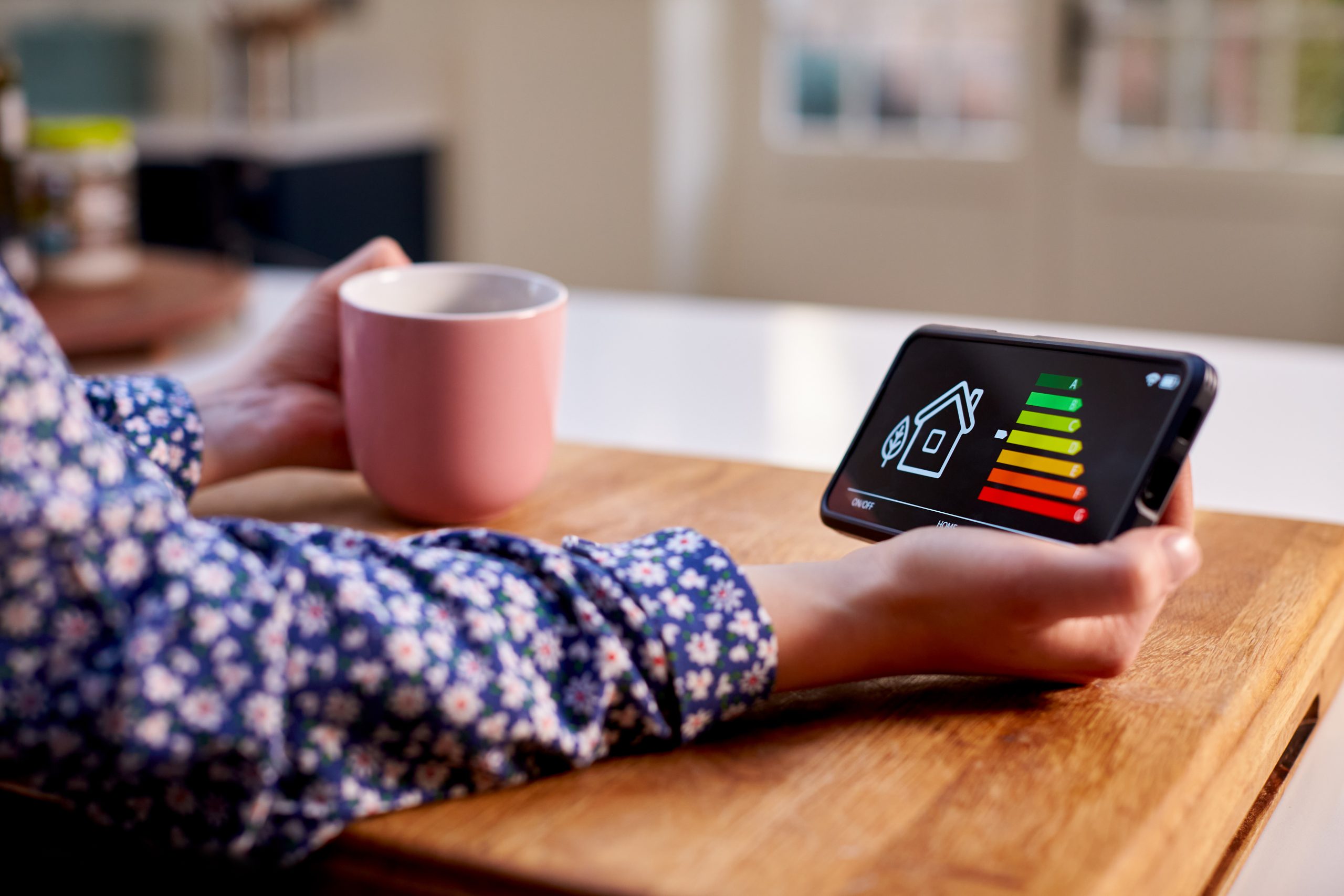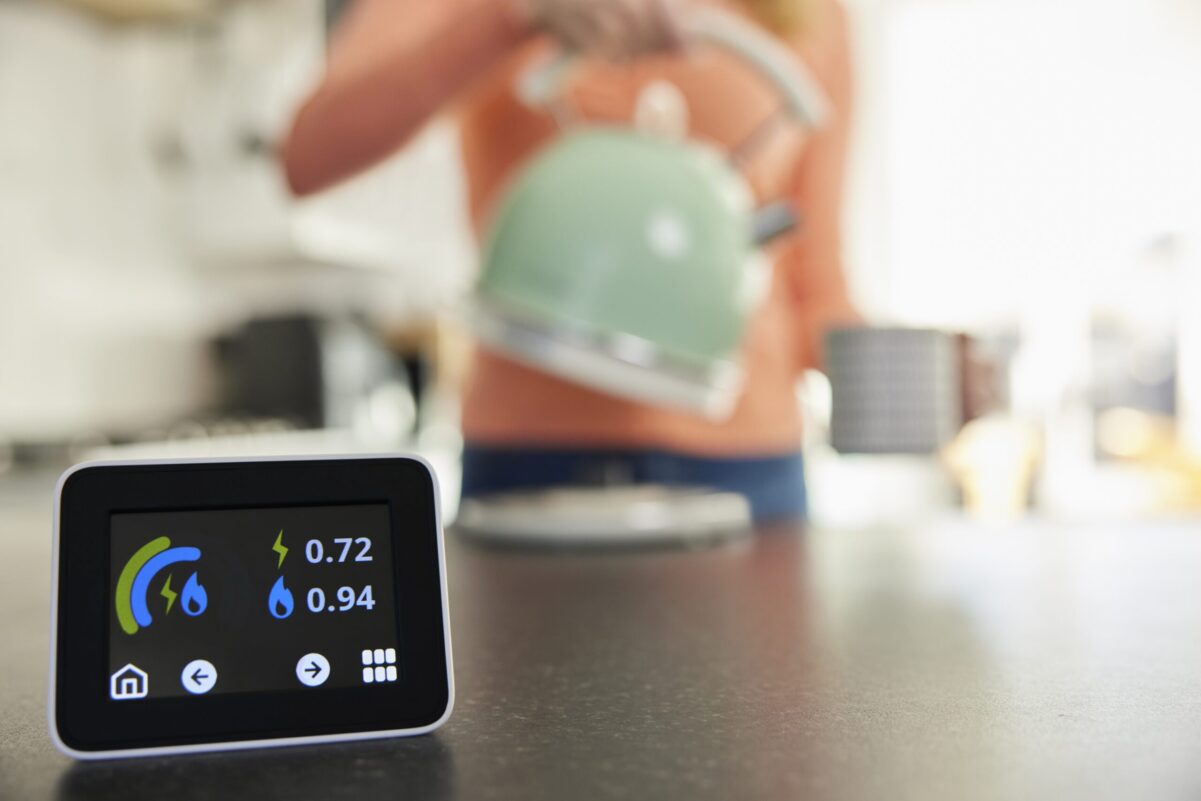If you can shift your energy use to a different time of day, you could save money on your electricity bills and help the UK reach net zero.
How? By signing up to a smart time of use tariff.
Understanding time of use tariffs
Our electricity grid is powered by lots of different energy sources, including:
- wind
- gas
- nuclear
When there’s a lot of demand on the grid, more of these sources are used, especially our gas-powered plants.
Think mornings when everyone’s getting ready for work, or evenings when dinner is cooking: these are known as peak periods. During peak periods, electricity is typically higher carbon because more gas is burned to meet the increased demand.
To encourage you to use less electricity during peak times, a time of use tariff will charge you a higher price for any electricity used in this period. It will also charge a lower price during lower demand, off-peak periods.
To sign up to a time of use tariff, you’ll need a smart meter. To benefit, you’ll also need to be able to move your electricity use to off-peak periods. Many people on these tariffs have a battery that they charge with lower priced electricity and use it when prices are higher.
Smart meters
A smart meter uses a secure smart data network to send readings automatically and wirelessly to your energy supplier at least once a month. This helps you receive accurate, not estimated, bills.
A smart meter can provide readings every 30 minutes. This data enables energy suppliers to offer tariffs that can adapt to changes in demand.

How smart time of use tariffs work
Smart time of use tariffs are a type of pricing structure that varies the cost of electricity based on the time of day you use it.
Unlike traditional fixed-rate or standard rate tariffs, these tariffs consider the changes in energy demand throughout the day. This means that electricity prices can vary depending on whether it’s:
- peak hours
- off-peak hours
- shoulder hours
Peak hours typically occur during periods of high energy demand. This includes weekday evenings when people return home from work and appliances are in heavy use. During these times, electricity prices under a smart time of use tariff may be higher than standard rates to reflect the increased demand on the grid.
Conversely, off-peak hours, which usually occur late at night or early in the morning when demand is lower, often feature lower electricity rates.
Shoulder hours fall between peak and off-peak times and generally have intermediate pricing. Smart meters enable smart time of use tariffs by providing frequent and accurate readings of energy consumption.
Static time of use tariffs
Time of use tariffs can vary in structure. Nearly all tariffs are static. Static time of use tariffs are likely to have prices fixed long in advance. While these may vary seasonally, the price points and time blocks associated with them are regular. Examples of this might include tariffs that:
- have different weekend and weekday prices
- set hours overnight for charging your electric vehicle (EV).
Dynamic time of use tariffs
Dynamic time of use (also called real-time pricing) tariffs offer a different price per unit of energy depending on the time of day. This means times and rates typically change from day to day. Prices are decided close to the real-time consumption of electricity and are based on wholesale electricity prices.
Negative pricing can be an element of these tariffs. This is when you’re paid to use electricity. An example of this is the Octopus Agile tariff, which paid customers to use electricity for more than 200 hours in 2023.
By shifting energy-intensive tasks to off-peak hours, you can take advantage of lower rates. However, if you can’t move your energy use outside of peak times, a smart time of use tariff is unlikely to work for you.
Potential savings
The potential saving you make by switching to a smart time of use tariff depends on:
- the price set by the tariff
- how much you’re able to shift your demand outside the peak hours
Many people who choose a smart time of use tariff can shift their energy use because they have an EV or a battery. This means they can charge their car or their home battery overnight when demand is lower. They may also try to avoid using some of their appliances during peak periods. For example, they might use their dishwasher later in the day.
If you have storage heaters, consider whether a new smart tariff is better value than the traditional Economy 7 tariff. Have a hot water cylinder? It’s worthing considering whether you can save money by heating it during off peak times using a smart tariff.

What do I need to consider?
Switching to a smart time of use tariff can be a smart move for many households, potentially leading to savings on your electricity bills and carbon footprint. Here are some questions to consider and discuss with your potential new energy supplier before signing up to one.
- Smart meter installation: Ask about the installation process for a smart meter if you don’t already have one.
- Check which tariffs are available to you: Some are only available if you have certain equipment installed, such as an EV charger or solar panels.
- Understand the tariff: Make sure you fully understand how the tariff works. Ask about peak and off-peak hours, and any seasonal variations.
- Peak and off-peak rates: Get clarity on the rates during peak and off-peak hours. Ask if these rates are fixed or variable and whether they change depending on factors like demand or time of year.
- Contract terms: Understand the terms of the contract, including any early termination fees or contract duration. Ask if there are any penalties for switching tariffs or suppliers in the future.
- Billing and payment options: How often will you be billed and what payment options are available? Some suppliers offer discounts for certain payment methods or billing arrangements. Understand how you’ll be notified of any changes to the tariff or billing.
- Usage monitoring tools: Check if the supplier provides any tools or apps to check your energy usage in real-time. This can help you optimise your consumption and maximise savings.
- Compatibility with home devices: If you have smart home devices or appliances, ask if the tariff is compatible with any energy management systems. Check if your appliances come with any apps or ways to connect to the smart meter so it can be easier to use them during off-peak periods.
- Tariff flexibility: Ask about any flexibility in the tariff, such as the ability to switch between tariffs or opt-out of time of use pricing if needed.
- Feedback from existing customers: Research or ask for feedback from existing customers who have already switched to the same tariff. This can provide insights into their experience.
How community energy can help deliver affordable power
Community energy organisations are finding ways to translate their clean power into lower energy bills. Let's look at some examples.
Heat pump installation: a step-by-step guide
Heat pumps are an effective way to heat your home that could save you money on your energy bills and reduce your…
Autumn Budget 2024: What we expect and hope to see
Here’s what we’re expecting to see announced in the 2024 Autumn Budget, as well as what we hope the UK Government discusses.